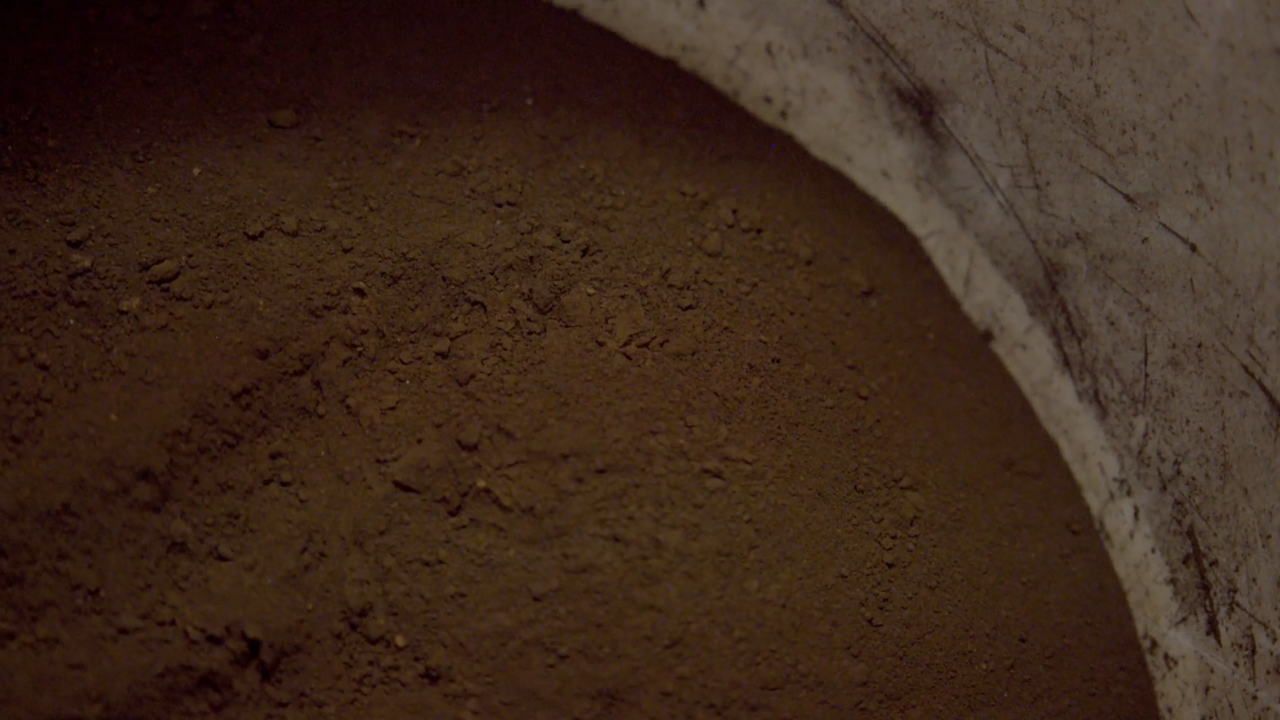ORLANDO, Fla. — In the race into space, some of its dustiest work might well be happening at a nondescript office park in Central Florida.
"It's very red and it gets everywhere," said Anna Metke. "This is, for example, our lunar highlands simulant. It makes up a good portion of the moon."
Welcome to Exolith Lab: their business is out of the world.
"We focus on making high fidelity testing materials for spacecraft that are trying to land on the Moon, Mars, asteroids or any other planetary body," said Metke, who is the lab’s director of operations.
In other words, at Exolith Lab, researchers are making space dirt.
"Simulant is what we call it here," Metke said.
Exolith Lab is a collaboration of faculty, students and staff. It is based at the University of Central Florida.
“We started off making just small little bowls of simulant,” she said, “but as demand has grown, we've gotten more and more industrial-sized."
In just three years, Exolith Lab went from making three tons of simulant to more than 10 times that amount -- 37 tons. It is shipped all around the world. Their clients range from big aerospace companies to local schools.
“All kinds of science fair projects can happen, right? We want to inspire young minds to also solve these big problems that we're trying to solve,” Metke said.
Part of the charm, if you will, of moon and Mars dirt is that it has a tendency to get everywhere. As harmless as it can seem on Earth, it can be a really big problem for machinery headed off-world.
"It sticks everywhere,” Metke said. “Can you imagine if you were electronics trying to survive in this kind of environment?"
Over the decades, previous testing relied on sand, but it didn't hit the mark in size or chemical composition.
"We can make lots of different variations of material here and make sure that whatever machines we devise that they can operate in all sorts of different environments," said Hannah Sargeant, a planetary scientist at Exolith Lab.
NASA’s Artemis mission is preparing to send humans back to the moon within three years and plans to send humans to Mars in the 2030s. That means simulated extraterrestrial dirt is a must-have tool.
"Planetary missions are expensive,” Sargeant said. “So, if we're going to send something to another planetary surface and then find that it gets stuck in a ditch and our rovers can't dig its way out, then we need to be able to prepare for that."
That is where Parks Easter comes in.
"My job is pretty much making sure it's as close as we can get," Easter said.
With information collected from previous moon and Mars rover missions, the lab uses materials found here on Earth – in lava rocks, among other things - to recreate the composition of surface soil found on other worlds.
"I'm very invested in seeing where these rovers go. I mean, specifically for VIPER -- that's a rover that we've helped with a lot and it's going to the moon," Parks said. “And, you know, when it lands, it's just can be really exciting to see how well it works."
It will also help show whether the soil encountered up there hit the mark with the lab recreations down here on Earth.








